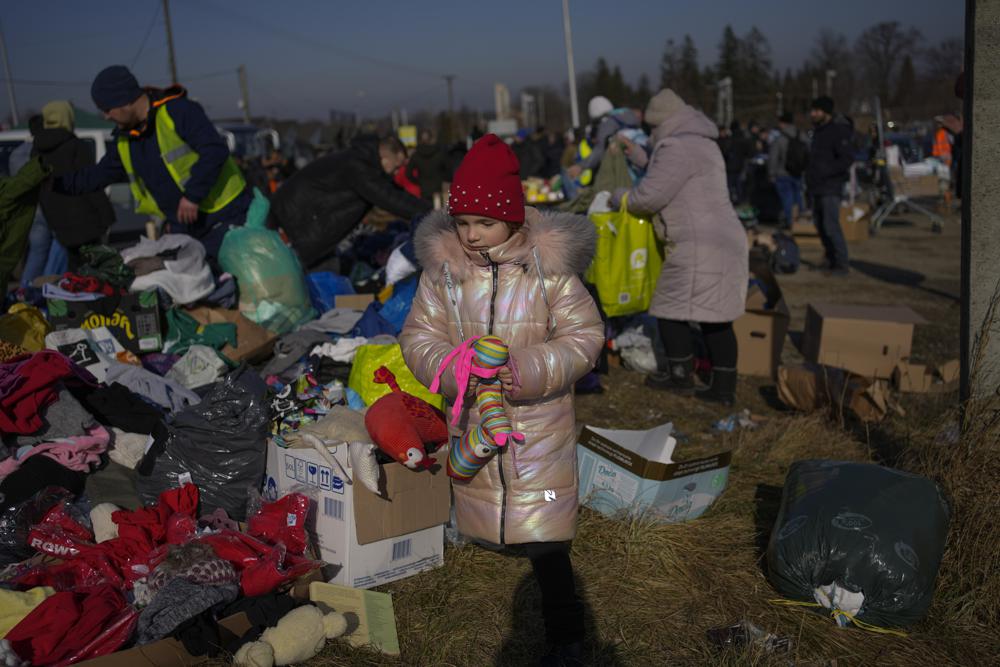As our daily news coverage is full of images and videos of Ukrainian civilians fleeing their homes, it is human nature to want to reach out when we see others in trouble.
There are several ways to help in a crisis, but not all are as effective as you want them to be. As we try to find a way to support those near and far while Ukraine is under attack, here are some tips to ensure your contributions are put to the best use.

A Ukrainian refugee girl collects a toy from a pile of donated goods at the Medyka Border Crossing in Medyka, Poland, on February 26, 2022 | AP Photo by Bernat Armangue
Don’t: Donate physical items
An AP photo of boxes of donated clothes sitting on the Polish border with no one to sort them and no place to put them makes an important point. Despite our good intentions, giving clothes, blankets and the like usually may not end up making a positive impact. According to Relief Web, these items are referred to as “unsolicited bilateral donations” that if not properly planned can cause problems due to lack of paperwork, can congest ports and entry points, and can compete with priority relief items for storage. You are better off donating those items to organizations who operate in the space of taking physical donations year-round, like Cradles to Crayons or Habitat for Humanity.
Do: Make a monetary donation
Going this route gives you the opportunity to send funds where they can do the most good. While we all may think we know what is needed, the organizations on the ground or involved in the actual crisis know best. By donating an unrestricted monetary gift, you are placing the money in the hands of people who can make the most out of it and the impact will be the greatest for those who need it.
Do: Research organizations
When making a monetary donation, take the time to confirm the group is legit and your money will be going where you expect it to. Using tools like Charity Navigator will enable you to research the organization and see where they rank on the “Give with Confidence” scale. Using the federal Form 990, the IRS document that publicly shares a nonprofit’s financial information, the site analyzes where the income is going, and the score is based on how much is used for programming. If you are familiar with an organization or have donated to them in the past, you should feel confident donating through the official website.
Don’t: Donate to crowdfunding sites, unless you are close to the recipient of the funds
Even though crowdfunding sites continue to be an easy way to donate, keep clear of these sites for larger crises. There are examples of scam campaigns where the story was fabricated and the money didn’t go where the donors thought. This could easily be avoided if you keep the sources for those donation opportunities close to home. Restrict your crowdfunding donations to cases where you are connected directly, or once removed, from the person or cause the effort is connected to.
Do: Donate your time to alleviate a local crisis
Sometimes a crisis occurs in our own community and donating your time as a volunteer is the best contribution of all. Several organizations activate immediately when those nearby need assistance. Take a moment to determine in what way you would feel most comfortable participating, whether that is helping the local food pantry give out food or donating blood. There are lots of ways to give your time if those close by could benefit your in-person work.


